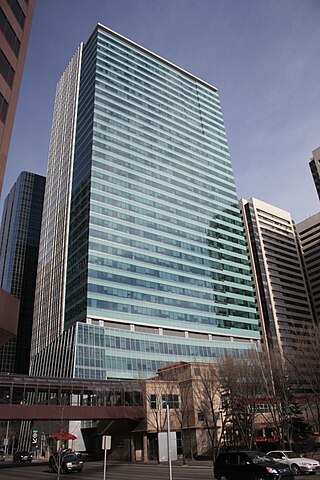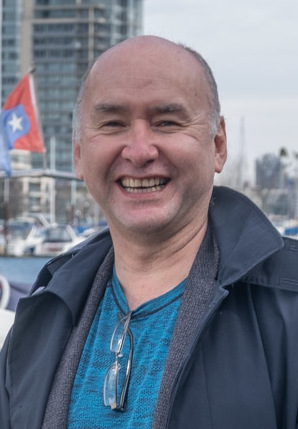Treaty Process/Land Claims
| | This section is empty. You can help by adding to it. (July 2010) |
The Haisla Nation is the Indian Act-mandated band government which nominally represents the Haisla people in the North Coast region of the Canadian province of British Columbia, centred on the reserve community of Kitamaat Village. The traditional territory of the Haisla people is situated along the Douglas Channel Region of Kitimat on British Columbia’s north coast, and includes the Kitlope Valley which is rich in natural resources, especially salmon.
Chief Councillor: Crystal Smith
Deputy Chief Councillor: Brenda Duncan
Councillor: Taylor Cross
Councillor: Margaret Grant
Councillor: Willard Grant
Councillor: Raymond (Sonny) Green
Councillor: Lucille Harms
Councillor: Trevor Martin
Councillor: Fred Ringham
Councillor: Harvey Grant
Councillor: Kevin Stewart
| | This section is empty. You can help by adding to it. (July 2010) |
The Haisla band council was described as "decidedly pro-business", supporting a liquefied natural gas (LNG) export project proposed by Apache Canada Ltd., and also gained equity in the BC LNG Export Cooperative. [1]
The Douglas Channel region has been targeted as tidewater for oil [1] and gas [2] export.
In 2004 the Houston-based firm Douglas Channel Energy Partners (DCEP) approached the corporate arm of Haisla band council regarding a potential construction project for a barge-based LNG facility. In 2011, HN DC LNG LP, a limited partnership, was formed for the Haisla Nation to engage in and benefit from western Canada's liquefied natural gas industry. In February 2012, the National Energy Board approved the LNG co-op’s project, "which will export up to 26 million tonnes of the supercooled gas over 20 years, with a single train that can process 125 million cubic feet of gas per day slated to begin operations in 2013." [1]
Kitamaat Village on Haisla First Nation traditional land would be the location of the Kitimat terminus, where oils sands' raw bitumen would be pumped onto Pacific Ocean supertankers if Enbridge's Northern Gateway pipeline project is approved.

Liquefied natural gas (LNG) is natural gas (predominantly methane, CH4, with some mixture of ethane, C2H6) that has been cooled down to liquid form for ease and safety of non-pressurized storage or transport. It takes up about 1/600th the volume of natural gas in the gaseous state at standard conditions for temperature and pressure.

Haisla people are a First Nation who reside in Kitamaat. The Haisla consist of two bands: the Kitamaat people, residing in upper Douglas Channel and Devastation Channel, and the Kitlope People, inhabiting upper Princess Royal Channel and Gardner Canal in British Columbia, Canada.
The Haisla language, X̄a'islak̓ala or X̌àh̓isl̩ak̓ala, is a First Nations language spoken by the Haisla people of the North Coast region of the Canadian province of British Columbia, who are based in the village of Kitamaat. This is 10 km from the town of Kitimat at the head of the Douglas Channel, a 120 km fjord that serves as a waterway for the Haisla and for the aluminum smelter and accompanying port of the town of Kitimat.

TC Energy Corporation is a major North American energy company, based in the TC Energy Tower building in Calgary, Alberta, Canada, that develops and operates energy infrastructure in Canada, the United States, and Mexico. The company operates three core businesses: Natural Gas Pipelines, Liquids Pipelines and Energy.

BG Group plc was a British multinational oil and gas company headquartered in Reading, United Kingdom. On 8 April 2015, Royal Dutch Shell announced that it had reached an agreement to acquire BG Group for $70 billion, subject to regulatory and shareholder agreement. The sale was completed on 15 February 2016. Prior to the takeover, BG Group was listed on the London Stock Exchange and was a constituent of the FTSE 100 Index. In the 2015 Forbes Global 2000, BG Group was ranked as the 583rd largest public company in the world.

Kitimat is a district municipality in the North Coast region of British Columbia, Canada. It is a member municipality of the Regional District of Kitimat–Stikine regional government. The Kitimat Valley is part of the most populous urban district in northwest British Columbia, which includes Terrace to the north along the Skeena River Valley. The city was planned and built by the Aluminum Company of Canada (Alcan) during the 1950s. Its post office was approved on 6 June 1952.

Douglas Channel is one of the principal inlets of the British Columbia Coast. Its official length from the head of Kitimat Arm, where the aluminum smelter town of Kitimat to Wright Sound, on the Inside Passage ferry route, is 90 km (56 mi). The actual length of the fjord's waterway includes waters between there and the open waters of the Hecate Strait outside the coastal archipelago, comprising another 60 km (37 mi) for 140 km (87 mi)in total.
Kemano was a settlement situated 75 km (47 mi) southeast of Kitimat in the province of British Columbia in Canada. It was built to service a hydroelectric power station, built to provide energy for Alcan to smelt aluminum from its ore. The Kemano Generating Station is built 427 m (1,400 ft) inside the base of Mt Dubose in a blasted cavern. It produces 896 MW of power from its eight generators, each of which has a capacity of 112MW.
FortisBC is a Canadian owned, British Columbia based regulated utility providing natural gas, and electricity. FortisBC has approximately 2,600 employees serving more than 1.2 million customers in 135 B.C. communities and 58 First Nations communities across 150 Traditional Territories.
Natural gas was Canada's third largest source of energy production in 2018, representing 22.3% of all energy produced from fuels in the country. By contrast, the share of fuel-based energy production from natural gas in 2013 was 17.0%, indicating a growth rate of approximately 1.06% per year.

The Kitimat River is a river in the Canadian province of British Columbia. It originates in the Kitimat Ranges, near the sources of the Dala River, Kemano River, Atna River, and Clore River. It flows in a curve north, then west, then south, emptying into Kitimat Arm at the head of Douglas Channel, at the town of Kitimat.

The State of Alaska is both a producer and consumer of natural gas. In 2006, Alaska consumed 180.4 Bcf of natural gas.
The Enbridge Northern Gateway Pipelines were a planned-but-never-built project for a twin pipeline from Bruderheim, Alberta, to Kitimat, British Columbia. The project was active from the mid-2000s to 2016. The eastbound pipeline would have imported natural gas condensate, and the westbound pipeline would have exported diluted bitumen from the Athabasca oil sands to a marine terminal in Kitimat for transportation to Asian markets via oil tankers. The project would have also included terminal facilities with "integrated marine infrastructure at tidewater to accommodate loading and unloading of oil and condensate tankers, and marine transportation of oil and condensate." The CA$7.9 billion project was first proposed in the mid-2000s but was postponed several times. The project plan was developed by Enbridge Inc., a Canadian crude oil and liquids pipeline and storage company.
The Azerbaijan–Georgia–Romania Interconnector (AGRI) is a proposed project to transport Azerbaijani natural gas to Romania and further to Central Europe. Natural gas would be transported by the pipeline from Sangachal Terminal in Azerbaijan to the Kulevi Terminal at the Black Sea coast of Georgia. In Kulevi, the liquefied natural gas export terminal would be built. Liquefied natural gas will be transported by LNG tankers to the Constanța terminal in Romania. After regasification natural gas will be delivered through the existing gas grid to Romania and other European countries. Alternative to the transportation of liquefied natural gas is transportation of compressed natural gas.
Tidewater is a term used by industries and governments to refer to access to ocean ports with international marine services for import and export of commodities. For export, the commodities can be shipped via trucks, trains and/or pipelines to a port, thereby opening the door to more lucrative prices on global markets. Getting to such a port is particularly important for landlocked jurisdictions seeking to expand and diversify markets for natural resources.
Ledcor Group of Companies is a construction company operating primarily in Canada and United States. Ledcor operates in a wide range of industries, including the construction of buildings and civil infrastructure, technical services such as communication networks, forestry, mining, property development and management, transportation, marine operations, and several energy projects, including oil, gas, and Liquefied Natural Gas.

Ellis Ross is a Canadian politician who was first elected in the 2017 British Columbia general election to represent Skeena. He was re-elected in 2020 and is currently serving his fifth year as a Member of the Legislative Assembly of British Columbia. He is a member of the British Columbia Liberal Party caucus and serves as its Critic for Energy & LNG.

LNG Canada Development Inc. is an industrial joint venture established to construct a liquefied natural gas (LNG) export terminal in Kitimat, British Columbia, Canada. The consortium is led by Shell and also includes Petronas, PetroChina, Mitsubishi, and Korea Gas. The Kitimat terminal will export LNG produced in the Montney Formation near Dawson Creek, B.C by the project's partners.

The Coastal GasLink pipeline is a TC Energy natural gas pipeline under construction in British Columbia, Canada. Starting in Dawson Creek, the pipeline's route crosses through the Canadian Rockies and other mountain ranges to Kitimat, where the gas will be exported to Asian customers. Its route passes through several First Nations peoples' traditional lands, including some that are unceded. Controversy around the project has highlighted important divisions within the leadership structure of impacted First Nations: elected band councils established by the 1876 Indian Act support the project, but traditional hereditary chiefs of the Wetʼsuwetʼen people oppose the project on ecological grounds and organized blockades to obstruct construction on their traditional land.